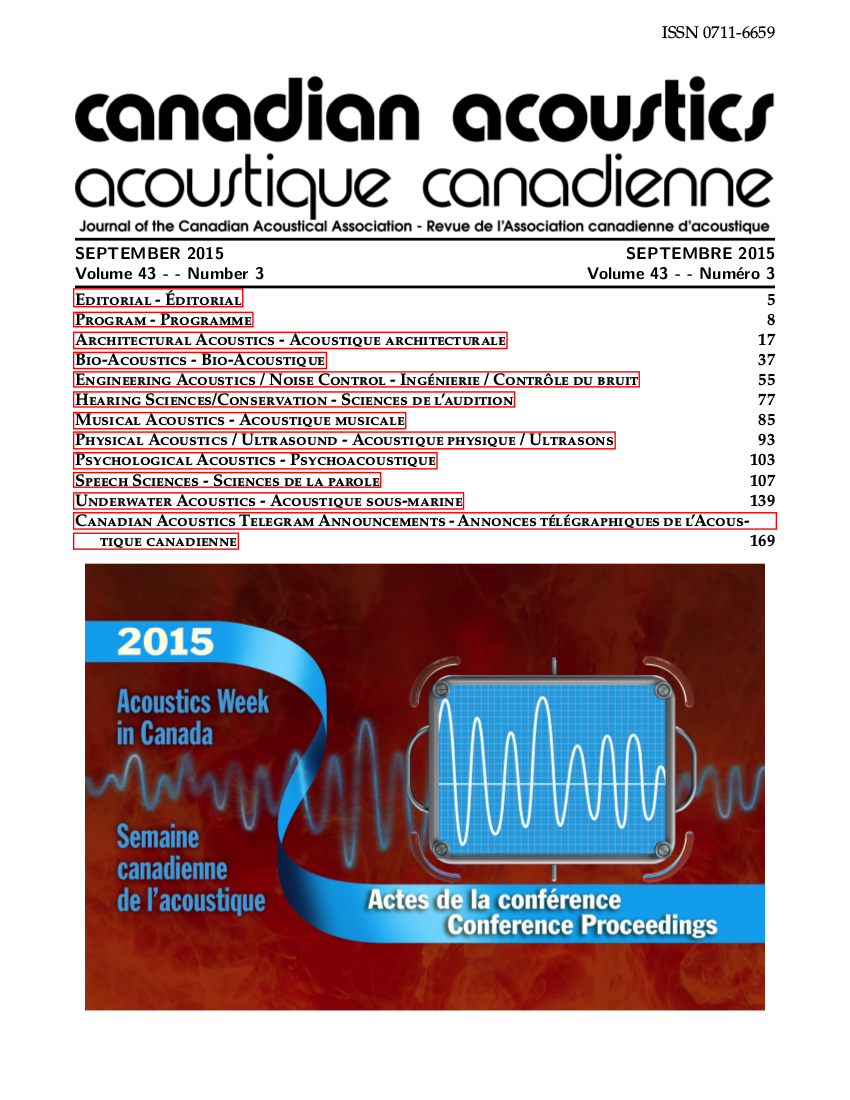Localizing Bowhead whales in the Chukchi Sea using asynchronous hydrophones
Abstract
This paper localizes bowhead whales using Bayesian inversion of the modal dispersion of whale calls recorded on asynchronous hydrophones in the northeastern Chukchi Sea, Alaska. A cluster of seven asynchronous ocean-bottom hydrophones (OBH), separated by up to 7.5 km, recorded low-frequency bowhead whale calls as the whales migrated through the Chukchi Sea. The calls dispersed into multiple modes after propagating through the shallow water environment. Relative mode arrival times are extracted from the recordings using a warping time-frequency analysis for nine frequency-modulated whale calls, each of which were recorded on multiple OBHs. A trans-dimensional Bayesian inversion approach is used to invert mode arrival times for the whale location in the horizontal plane, source instantaneous frequency (IF), water sound-speed profile, seabed geoacoustic parameters, relative recorder clock drifts, and residual error standard deviation, all with estimated uncertainties. A simulation study found that accurate localization results could be obtained even without accurate prior environmental knowledge. Inverting multiple calls jointly is shown to significantly reduce uncertainties for whale location, source IF, and relative clock drift. Whale location uncertainties are less than 160 m and clock drift uncertainty is less than 26 ms. This clock synchronization accuracy is sufficient for localizing other types of marine mammal calls using simpler methods (e.g., time-difference-of-arrival).Additional Files
Published
How to Cite
Issue
Section
License
Author Licensing Addendum
This Licensing Addendum ("Addendum") is entered into between the undersigned Author(s) and Canadian Acoustics journal published by the Canadian Acoustical Association (hereinafter referred to as the "Publisher"). The Author(s) and the Publisher agree as follows:
-
Retained Rights: The Author(s) retain(s) the following rights:
- The right to reproduce, distribute, and publicly display the Work on the Author's personal website or the website of the Author's institution.
- The right to use the Work in the Author's teaching activities and presentations.
- The right to include the Work in a compilation for the Author's personal use, not for sale.
-
Grant of License: The Author(s) grant(s) to the Publisher a worldwide exclusive license to publish, reproduce, distribute, and display the Work in Canadian Acoustics and any other formats and media deemed appropriate by the Publisher.
-
Attribution: The Publisher agrees to include proper attribution to the Author(s) in all publications and reproductions of the Work.
-
No Conflict: This Addendum is intended to be in harmony with, and not in conflict with, the terms and conditions of the original agreement entered into between the Author(s) and the Publisher.
-
Copyright Clause: Copyright on articles is held by the Author(s). The corresponding Author has the right to grant on behalf of all Authors and does grant on behalf of all Authors, a worldwide exclusive license to the Publisher and its licensees in perpetuity, in all forms, formats, and media (whether known now or created in the future), including but not limited to the rights to publish, reproduce, distribute, display, store, translate, create adaptations, reprints, include within collections, and create summaries, extracts, and/or abstracts of the Contribution.


